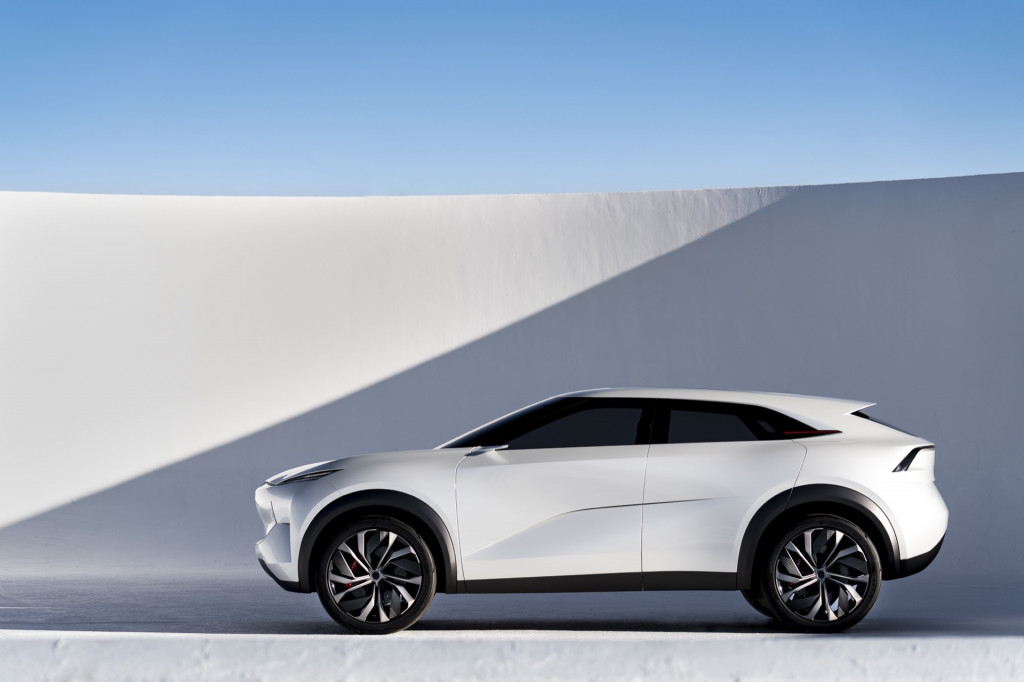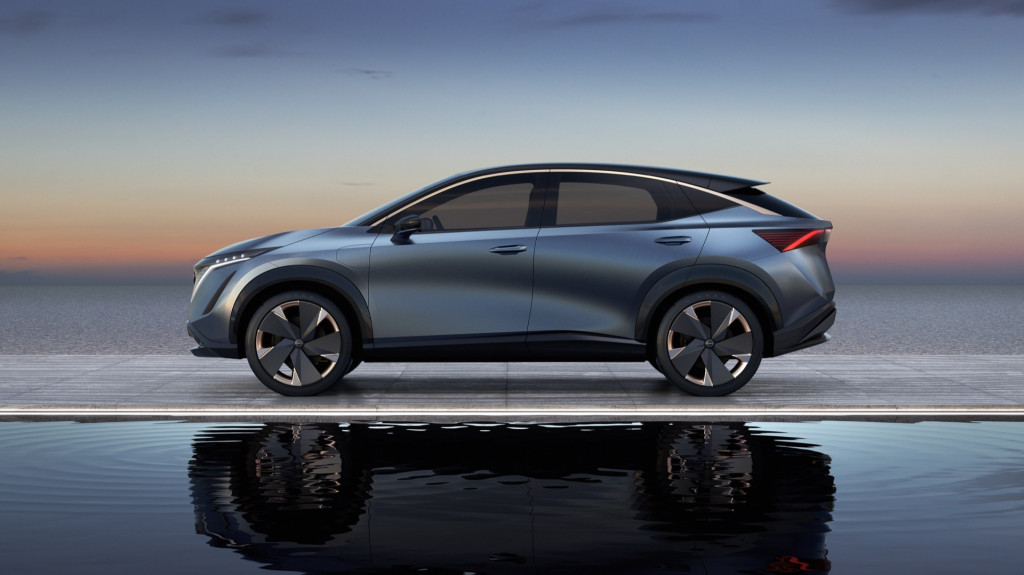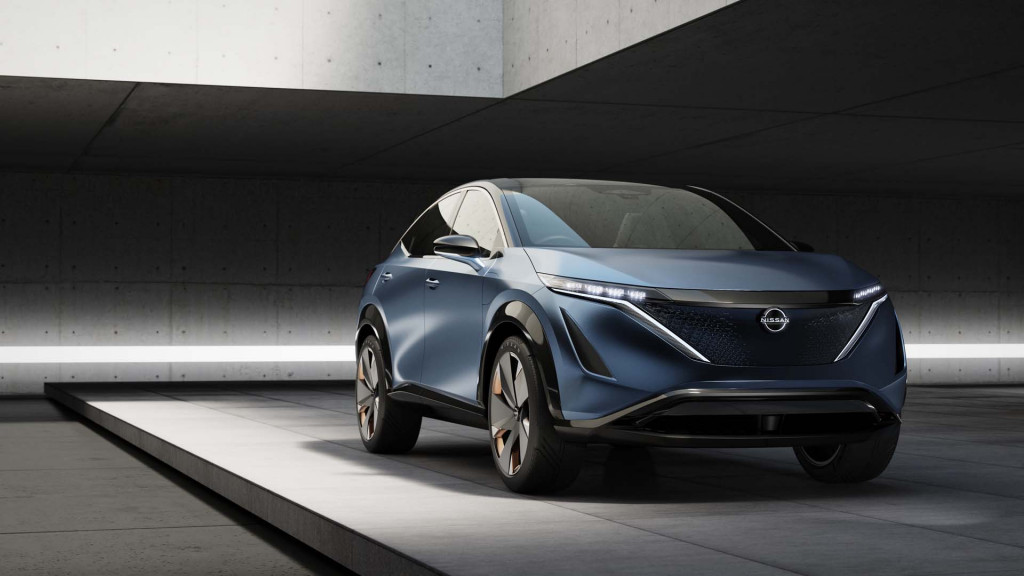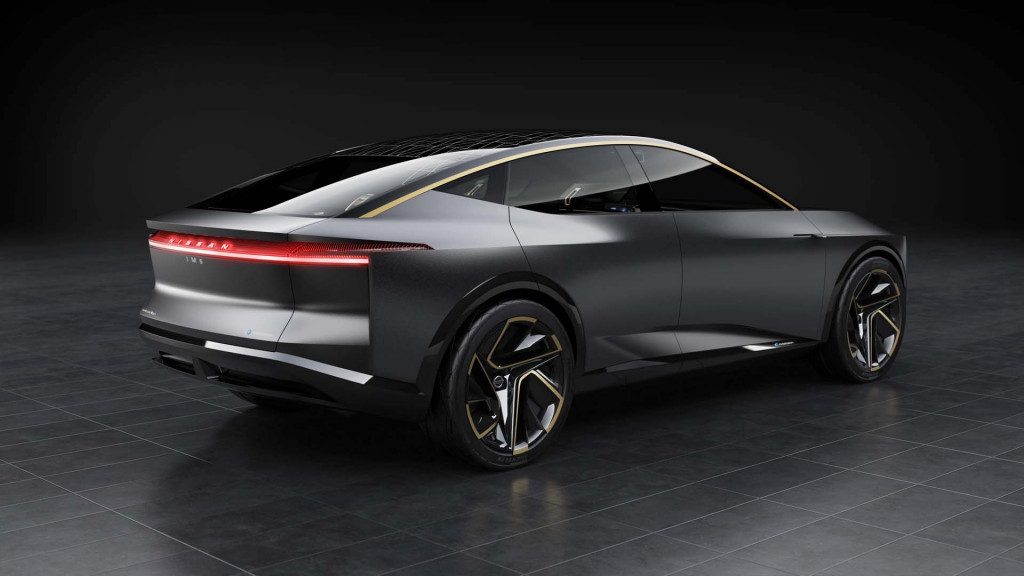Nissan hasn’t launched a completely new dedicated electric vehicle in nearly 10 years.
That’s all set to change soon with the introduction of not just one or two new EVs, but an entire new family of them—and potentially, by the middle of the decade, more than a dozen models globally across Nissan, its Infiniti luxury brand, and its Renault and Mitsubishi alliance partners.
All or most of these models are due to be built on a new dedicated electric-vehicle platform—the one that will underpin the affordable, 300-mile electric crossover based on the Ariya Concept that recently made its U.S. debut at CES in Las Vegas.
“It’s a magic carpet,” said Nissan senior VP for design Alfonso Albaisa, regarding how much design flexibility the platform allows. “Even more so than before, it’s a kind of blank canvas that you can completely change the car on.”

Infiniti QX Inspiration concept - 2019 Detroit auto show

Nissan Ariya Concept - CES 2020

Nissan Ariya Concept
One eye-opener on the platform’s adaptability for designers is that the Ariya Concept and the Infiniti QX Concept shown at the Detroit auto show last year are two such vehicles built on that same platform. You might never know it by looking at the two side by side.
“It’s a lot different than how we used to define platform,” he said, explaining that there’s some flexibility in the length and width of the vehicle. “The platform is really the concept of how the batteries are housed, and the character of the car; it’s no longer linked to an engine.”
The future Infiniti production models, based on the Q Inspiration, QX Inspiration, and QS Inspiration leave the engine option open, though. A small 1.5-liter turbo-3 version of Infiniti’s VC-Turbo (variable compression) engine will be offered on many of that luxury brand’s vehicles, functioning as an onboard generator, with special fluid-filled mounts and full encapsulation to keep engine noise and vibration out of the cabin.

Nissan Note e-Power hybrid
Albaisa confirmed that series-hybrid capability (E-Power, Nissan calls it) is part of the toolkit in the platform—and something that Nissan could choose to adopt in the future, perhaps for niche vehicles or in certain markets where a charging infrastructure isn’t developed.
Nissan and Infiniti have ruled out plug-in hybrids, but that’s something the other alliance member, Mitsubishi, might decide to continue in whatever it builds on this platform.
The electric platform strategy, which hasn’t yet been officially named in any Nissan releases, has been referred to as CMF-EV. And it isn’t far from what the company has already been doing with its CMF (common module family) C-segment platform, which is also highly shared within the Alliance.
Albaisa hinted that there will be many—as many as seven—Nissan-brand EVs globally, all sharing the same platform and some key battery and propulsion components.

Nissan IMk concept
“We’re kind of in a very interesting phase because we’re finishing some, we’re midstream on others, and we’re blocking in the remaining few of the family, because it’s not one or two, or three or four; it’s a bunch,” said Albaisa, emphasizing again that he was just talking about Nissan.
“So it does change the way you’re designing an individual car when you know that it’s a collection,” he said, with a deliberate pause, pointing out that the Leaf used to be just one model out of 60 Nissan cars, globally. But with 6 or 7 EVs out of something in the high 50s now, the EVs have a stronger influence in the brand’s design priorities.
With the platform setting some of the key dimensions and the interiors heading in the cleaner, more minimalist direction influenced by Timeless Japanese Futurism, and an emphasis on technology, Nissan started to formulate its ideas on what its next-generation electric vehicles were going to do.
“They’re going to be flagships as far as content but then they’re going to have this adventurous spirit,” he said.

Nissan IMs concept

Nissan IMs concept

Nissan IMs concept
While most of that future EV lineup remains either top-secret or yet-undecided, the one confirmed Nissan EV is based on the IMs Concept, which is a fastback sedan given a crossover raise in ride height and “has this tough character,” Albaisa said.
“This shows a bit the platform flexibility,” he said of the IMs. “Yes it’s the same platform, but in the electrified era of ‘platform,’ the magic carpet got longer, it got more power, and it became a different animal.”
Just as the IMx returned in more production-bound guise as the Ariya, expect the IMs to do the same in the near future. In the meantime, let’s hope the battery technology and the components that are in that toolkit, which Nissan hasn’t yet been willing to detail beyond its twin-motor e-4orce chassis controls, are as well-coordinated as the designs.
